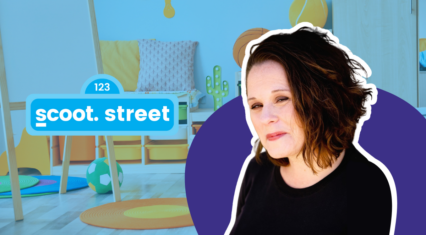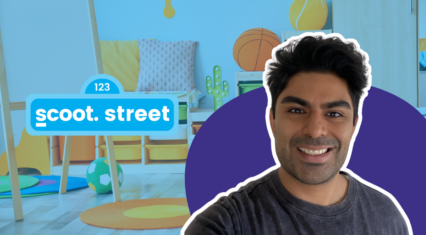Search
Get started
Log into your referral dashboard
Ever gotten stuck on a problem at work, only to complete it with ease after taking a short brain break? The same is true for your students.
In middle or high school, some students might view breaks as childish or a waste of time. But the opposite couldn’t be more true.
Brain breaks are powerful for motivating students and helping them focus better. There’s many ways to make breaks fun and collaborative as well.
We’ll dive into what brain breaks are, why they’re important, and how to incorporate them into your classroom.
What are brain breaks?
A “brain break” is an activity that gives students an energy boost, while preparing their minds and bodies to engage in the next task. They help students rest and refocus their mind to learn better.
Brain breaks are useful for all age groups from younger students to even adults!
There are many types of brain breaks:
- Movement breaks: Physical activities like walking outside, yoga poses, jumping jacks, motor exercises, or a quick dance party.
- Social-emotional breaks: Deep breathing, mindfulness exercises like meditation, journaling, or talking with a neighbor
- Mental breaks: creative exercises, playing a game, or multi-sensory art activities
How long should brain breaks be?
They should take 3 to 10 minutes. They can be done individually (like deep breathing) or as a whole class (like a round of Simon Says).
A general rule to follow is to take a 3 to 5 minute break for every 10 to 15 minutes of concentrated work time for elementary students, and every 20 to 30 minutes for middle and high school students.
15 brain breaks for secondary school
If video is more your thing, here’s Val, one of our Education Consultants, with 5 easy brain-breaks to refresh your kids and ensure their success. Read on to learn of 10 more brain break strategies.
View this post on Instagram
Movement breaks
As kids enter middle and high school, they lose recess time and spend more time on their screens or sitting at their desks through lectures and long study hours.
But exercise improves learning! Research shows that physically active children consistently outperform their inactive peers academically on both a short- and long-term basis.
A short movement break will get blood pumping through the body and oxygen flowing to their brains. This will help with attention, cognitive function, memory, self-regulation, and the ability to cope with stress. And it lightens up the mood!
1. Shake it out
Try the “5, 4, 3, 2, 1” method – call out five actions for your students to do as quickly as they can. For instance, 5 jumping jacks, 4 push-ups, 3 sit-ups, 2 squat jumps, and 1 tree pose. A little cardio gets the blood flowing and can enhance focus.
2. Pinky-Thumb Flip
This one-minute sensory exercise uses both halves of your brain and your hands. Hold your hands into fists. On one hand, stick out your thumb only. On the other hand, stick out your pinky. Now, bring both fingers back in and switch back and forth.
3. Yoga minute
Take a minute to move and stretch with your students. Pick up to 5 yoga positions to hold for a few seconds. You can play a video to follow along or lead them through the sequence yourself.
Mindfulness breaks
Mindfulness exercises are extremely effective for stress reduction, relaxation, and overall well-being and mental health, no matter your age! In fact, many schools are using SEL (social-emotional learning) techniques in their classrooms.
Now more than ever, middle and high schoolers should be taught these strategies before they transition into adulthood. As they enter college, students will meet more stressful situations and responsibilities. These are tools that they can use throughout their life.
4. Guided breathing exercise
One way to practice mindfulness is by doing breath work. Invite students to think about what makes them feel calm and relaxed (e.g. listening to music, reading a book, lying down).
Share with students any of these 3 breathing techniques that they can use when they want to feel calm: balloon breathing, flower breathing, or blowing bubbles. You can also play a video for them to follow along.
5. Meditation
Guided meditation can help secondary students relax and refocus in class. It’s a simple and inviting way to promote mindfulness and well-being in the classroom.
Encourage students to find a comfortable position and close their eyes. Then, use a video that provides calming visuals and soothing audio instructions. Try Khan Academy’s guided meditation video for students.
6. Journal time
Set aside 5 minutes during a class period for journaling. Journaling is a great reflective exercise for people of all ages. Depending on your prompt, students can practice gratitude, honesty, self-awareness, and take a step back from busy-ness.
If you collect their journals, reading them can always teach you something new about your kids, allowing you to connect with them with more empathy. Here are 55 prompts high school students will love. Feel free to make up your own as well!
Creative activities
Get your students to exercise their artistic abilities in any medium – drawing, storytelling, or music. Gamify these activities to get everyone engaged and socializing with each other.
7. Collaborative storytelling
First student starts the story with one sentence. Each subsequent student adds to the story with one additional sentence. Story ends with the last student.
8. Drawing games
You could play a game that gets students to bust out their drawing and guessing skills. You’ll definitely get a few chuckles at people’s drawings. Here are two games that are great for large groups:
- Pictionary: This is a simple drawing and guessing game. Use the whiteboard and have everyone guess individually or in teams.
- Telestrations: This is like a “telephone” game, but on paper. It’s also known as the “Write Draw Pass” activity. You’ll need to divide up a large class into groups of 8 and make sure there’s a logical passing order. Learn how it works here (and fun variations).
Classroom games
Games help students practice communicating verbally or nonverbally and get to know more about each other! They also bring out people’s competitive spirits, encourage teamwork, and teach strategy.
9. Two Truths and a Lie
This is a fantastic 10-15 minute icebreaker that encourages students to share interesting tidbits about themselves. It helps students get to know each other in a lighthearted way.
You can play this game on teams or individually. It’s an ideal activity for the beginning of the school year or after a break.
10. Heads Up, Seven Up
Heads Up, Seven Up is a quiet, deduction game. There are 3 ways to play Heads Up, Seven Up.
It’s a perfect game to play to calm your kids down after a long day. Tell your kids they can play this at the end of class. They’ll be excited to play and finish up their work quickly!
11. Silent Ball
Try Silent Ball for three minutes before dismissal. Have students stand in a circle, sit on the carpet, or even sit on the tops of their desks.
Give students a small, squishy ball to silently pass around to each other in class. If a student makes a bad pass, drops the ball, or utters a sound, they’re out of the game. Keep playing until there is one student left standing (or sitting).
There are some modifications you can make. For example, players out of the game can knock down a pass in order to join back in the game.
Silent Ball builds a positive classroom community by fostering friendly competition and boosts nonverbal communication.
Educational breaks
Take a few minutes to learn a quirky fact, an interesting historical event, or a new language. It’ll broaden their horizons, giving students a fresh perspective on humanity and a break from work.
12. Learn something new
Watch a short 3-5 minute video that inspires wonder or curiosity. Learning doesn’t have to be confined to the traditional curriculum!
Videos from SciShow, How it’s made, or National Geographic can be a quick, interesting break from the work they have been doing. Make sure the video is appropriate for class and not too long and distracting.
13. Foreign language tongue twister
Try out a tongue twister challenge-in a different language for an extra challenge. It’s a fun way to improve pronunciation and discover hidden linguistic talents!
Check out: 9 Tongue Twisters From Around the World
Other brain breaks
Give your students space to solve puzzles and write down their thoughts. Riddles and puzzles encourage kids to exercise their brain outside of the days’ lessons. Introduce these breaks after they finish work, so they don’t become too much of a distraction.
14. Riddle time
Challenge your kids to think outside the box. Share a few of these brain bending riddles for your students to think about during the day.
Check out: 100 Riddles for the Classroom
15. Puzzle palooza
Bring in a puzzle and set up a little table for a quick puzzle break to reward your kids for finishing their work on time. Some might stay throughout recess time to complete the puzzle.
Check out: Free Online Jigsaw Puzzles
Why are brain breaks important?
Brain breaks help students recharge, refocus, and reconnect with themselves and others. There are all kinds of benefits associated with brain breaks:
- Enhance focus and concentration
- Boost learning and short-term memory
- Emotional regulation
- Inspire creativity and problem-solving skills
- Improve social skills
- Foster positive classroom environment
Take recess, for example. Research shows the power of recess! When children play together, they learn how to take turns, resolve conflicts, and solve problems.
How do I integrate brain breaks effectively?
1. Observe your students’ engagement levels
Schedule a group game after 20 to 30 minutes of quiet work. Or let them know they can relax after they answer 5 math questions. This will help your students stay motivated during work time, knowing they have a break coming up.
You might decide to adjust the timing depending on the age and specific needs of your students. Older students tend to focus better than younger students.
Most importantly, stay flexible! Carefully observe if your students are getting tired or losing focus early. Then start the brain break earlier to re-energize them! If they’re on a roll, hold off on taking a break.
2. Pick different brain breaks
Create a list of brain breaks to make it easy to get started without thinking and choosing. And it allows you to try out different ways to engage your students!
Or here are some more creative options:
- Put them on a large dice or beach balls
- Write them on popsicle sticks to pull from a jar
- Print a brain breaks bingo card to complete
3. Find the best break for the right situation
Think about what your group of kids will respond best to. Each kid has different interests and preferences. Take this opportunity to get to know your students better! Do they like making music? Do they like dancing? Are they into drawing?
Also consider the time of day and your students’ energy levels. If everyone is tired at the end of the day, a sit-down activity might be better than a dance break.
Being aware of your students’ energy levels and enthusiasm will help you run effective brain breaks.
4. Use a timer
Keep time with a stopwatch or your phone to make sure your break lasts the right amount of time.
Too short, and kids might not feel rested enough. Too long, and they might become distracted and reluctant to return to the task at hand.
Place the timer somewhere your students can see or use music as a countdown timer. Tell them that the activity is over when the song is over. This way, they can be fully prepared to get back to work when it’s time.
5. Talk about it afterward
Make sure to ask kids how they felt about the activity.
Ask them the following questions:
- How did you find today’s work?
- What was your favorite brain break?
- How do you think the brain break helped you?
Their feedback will help you understand how to improve your brain break sessions.
Want to sub with us?
We hope these ideas and tips were helpful! If you’re a current sub or someone looking to try out teaching, apply to Scoot Education! We’re a substitute teacher staffing company dedicated to creating exceptional experiences in education.
As a Scoot sub, you’ll get ultimate flexibility in your work schedule, 1-on-1 support through a personal Education Consultant, and market leading pay.



![How to write a strong substitute note [+free template!]](https://scoot.education/wp-content/uploads/2022/05/thank-you-426x235.png)


